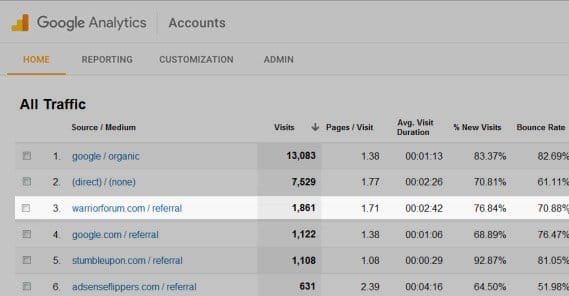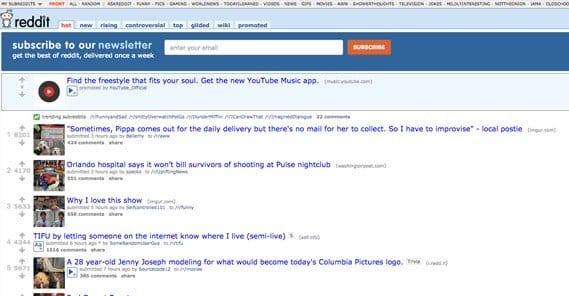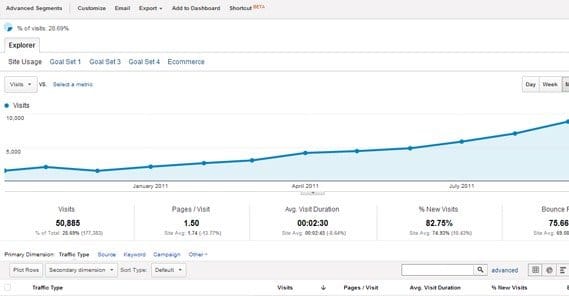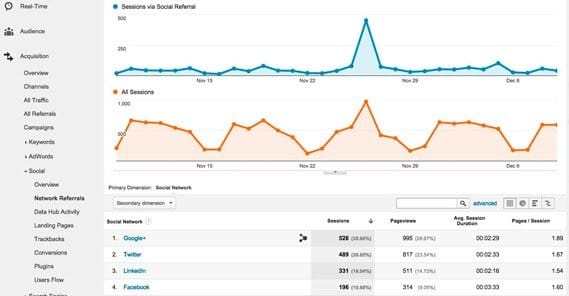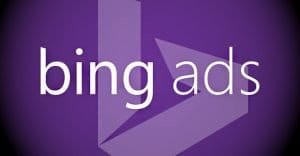How to Find Cheap Traffic That Will Actually Convert
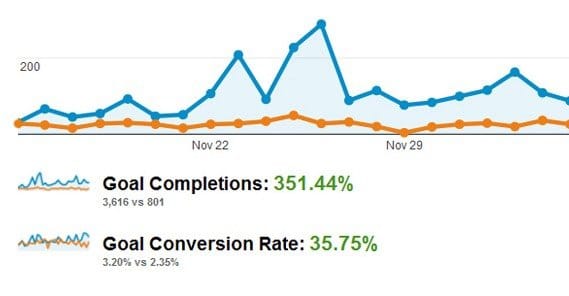
It’s one thing to get traffic to your site, and it’s quite another to get traffic that will convert. Without that singular, all-important action, traffic is completely worthless to you. It’s like having a retail store where a million people cycle through every day, but none of them make a purchase. All they’re doing is crowding your store, trampling your employees, and potentially stealing.
The goal here is to get traffic from sources that are as close to free as possible, or that are free entirely. However, the more important goal is to make sure all of that traffic has the potential to convert. If you’re just hauling in any old visitor, it’s not doing you any good. You aren’t earning money when you buy 10,000 hits from a bot on Fiverr.
The best source of traffic is a source where your ideal users hang out. If Nike wants to sell athletic shoes, they’re going to market them in gyms and fitness stores, on athletics forums, and through sponsoring marathons. They aren’t going to market them in the deli section of the supermarket, at a chocolate festival, or on the Weather Channel. It’s all about knowing your audience, knowing where they hang out, and reaching out to them there.
What I’m going to do is list a bunch of different sources, how you can use those sources, and the potential drawbacks of those sources. It’s up to you to determine if your particular audience can be found there, and how to tap into them.
Web Forums
Believe it or not, web forums can still be a great choice for traffic, but only if you’re in the right relevant niches.
Reddit is one such forum, but it’s unique enough that it has its own point. There are a bunch more, though. Just take a look at the list of the biggest.
- ConceptArt.org, a community centered around art, primarily CG. Artists and designers socialize and critique each others’ work, and it’s a perfect place to drop in to advertise art tools.
- Gaia Online, a huge community of tweens and teens centered around anime and gaming, but with subforums for all sorts of other topics, ranging from TV and literature to sports and music.
- XDA-Developers, a community for app developers creating mobile phone apps. There are guides, resources, and helpful folks in every app niche. Good for developers, those who provide developer tools, and those who have app-related services.
- Bodybuilding.com, a community for the fitness-inclined, particularly those who want to build muscle and even grow to compete in bodybuilding competitions. Anything fitness, exercise, or supplement-based can be advertised here.
The thing is, most forums don’t have advertising systems in place. If they do, they tend to be implementations of AdSense or another view/click-based program. Even so, most of the regulars on the forum won’t pay attention to the ads; they’ve been there long enough to have firmly established banner blindness.
To make full use of a forum community, you need to become a member of that community. You need to learn their rules and their temperaments. You need to become one of them, and then begin to provide your blog posts in context of discussions, your products as something that can help.
As you’ll see with Reddit, the idea is to be a member of the forum first, and a marketer second. You’re not there to advertise, you’re there to participate in a way that benefits you.
Reddit is like a forum made up of thousands of forums, each covering their own topic. Pretty much anything imaginable has a subreddit, including some topics you wouldn’t imagine. There are sections for marketing, for gambling, for gaming, for porn, for urban exploration, for photography, for electrical engineers, and a million other things.
Reddit’s advertising rules state that it’s okay to be a redditor who has a website, but it’s not okay to be a marketer trying to use Reddit. The idea is exactly what I espoused above; you need to find a community and participate in it, and only drop your own content when it’s valuable to others to do so. This kind of direct engagement goes a long way towards making you a valued member of the community, and it benefits you with highly engaged users who know you personally.
If you want to know more about Reddit marketing, we’ve written another post about it over here. We talked about how to learn Reddit, how to go about organically marketing on Reddit, and how to use their sponsored ads system.
The number one thing you need to do with Reddit is find subreddits that fit your audience. You should also find a couple that match your own personal interests, so you have more than just marketing under your belt on the site. An organic profile is much better than an obviously trying-too-hard profile.
Guest Blogging
I’m assuming you have your own blog, and will be covering that in the next section. First, though, you should strongly consider reaching out to become a contributing author for other industry blogs.
Guest posting should be used for three reasons.
- To obtain backlinks to your site.
- To broaden the exposure of your name and your brand name.
- To showcase your product in action.
People tend to convert more when they recognize the brand in question, regardless of why they recognize it, so long as it isn’t a clearly negative reason. For example, if they only recognize your brand because of some big customer service fiasco, that’s a negative. However, if they recognize you because they see your name everywhere, that’s better. That’s why guest posting, even when you don’t get a direct link, can still be beneficial. Of course, this kind of brand building is hard to track, and it’s not getting you traffic directly. That’s what links are for.
The first thing you need to do is locate blogs that have an audience you think you could take advantage of. Consider the content they produce, and contact the editors with a query about writing for them. Ideally, you will be able to have a nice chat with an editor and can pitch a couple blog post ideas, get approval for one, and submit it fully written later. Any link, even a nofollowed link, will be valuable here. The follow status of the link is important for organic SEO metrics, but all you need for referral traffic is the existence of the link itself.
Of course, from there you have to pay attention to referral landing pages and the associated conversion rate optimization. That’s on you, though, it’s not the focus of this post.
Native Blogging
Native blogging is blogging on your own site, which you should be doing a lot of at any given time. Posting at least twice a week is recommended for most blogs, though if you can’t maintain such a schedule, do what you can consistently. Consistency in terms of quality and schedule is number one, with volume a number two.
Native blogging is what fuels organic search traffic. It’s all about attracting traffic, like moths to a flame. Except that’s not a good metaphor; what does the moth bring to the table? All it does is flit around or get burned. A better analogy would be like bees to a flower. Bees get pollen out of a flower, which they bring back to their hives. Flowers get fertilized, which is obviously beneficial to the survival of their species.
You need to know what your audience is interested in learning, what problems they face, and what role you can play in their lives. You need to create content that appeals to them, targeting keywords relevant to the problem or interest you identified. You need to provide highly valuable content that, when they land on your page and see it, entices them and solves their problem.
You won’t convert everyone you satisfy this way, but you will build awareness and you will convert some of them. The more you can involve your product as the solution to their problems, the better off you’ll be.
Social Media Sources
Social media is at once one of the best sources of organic traffic and one of the cheapest sources of paid traffic. Facebook in particular is excellent for PPC traffic, as the very robust audience targeting allows you to show your sponsored posts to exactly the people most likely to be interested in them.
Facebook is the number one platform to use for just about any business. You can build an organic audience of interested users you can draw on for conversions and for demographic information. You can use paid ads to reach new people and remarket to existing users. You can reach out to groups the same way you would another online community.
Twitter is wonderful for targeted marketing and for short product updates, an RSS-style blogroll, and for customer service. It doesn’t have quite the same power as Facebook, but it should still be one of the essentials for every business. It’s also the best place to run contests.
Instagram is excellent if you have a particularly visual brand, but there’s not much you can do with it if you don’t. Pinterest is much the same; you need to appeal to a sort of visual, DIY, crafty sort of audience to make full use of Pinterest.
AdWords and Other Cheap Ads
Paid advertising is not necessarily cheap, and that can be a problem. Ads are only as cheap as your niche and your quality score allow them to be. You can pay a little or a lot, and it’s going to get you a scaling volume of traffic, but again: conversion is the main point here. Ads will require you to make sure you have a good, high converting landing page. They will also require you to know your audience very well, because if you’re targeting the wrong people, even a great landing page won’t do you well.
The key to success with paid ads is low budgets and a lot of testing. Start with broad testing of different keywords to find where you can get the most volume with a baseline level of conversions. Then work to improve your ads, with better copy and images if necessary. Optimize your landing page for more conversions, and then work to broaden your keyword base. As you gain success with ads, you’ll make more money and thus have more to invest in more ads.
Purchased Traffic
Purchasing traffic can be a very risky venture. If you’re buying traffic from the wrong sources, you’re going to end up with a lot of visits from bots and from people well outside your potential demographics. It’s not different from ads or from Facebook, really. If you throw money out there, people will take it, and they won’t really care who you are because hey, free money.
What you need to do is research the company you want to buy traffic from. I’m not talking about social ads or PPC here, those are easier to deal with. I’m talking about third party sellers who manage their own ad networks. You want to make sure they’re actually pulling in real people with real interests, people from the right demographics, people who can convert if you interest them enough.
What this means is that you’re going to have to be skeptical and read a lot of reviews. Once you’ve found a company you think sells viable traffic, you should always start with a small plan and use a dedicated landing page you can track. Make sure the traffic is valid before you invest any more into a company.
As with any source of traffic, you need to monitor what it does. It doesn’t really matter where it comes from if it doesn’t convert. If it converts, you need to know where it came from and how to get more of it. Regardless of source, you need to adjust your marketing to scale up the effective sources and either change or dial back on the ineffective sources.
 ContentPowered.com
ContentPowered.com
